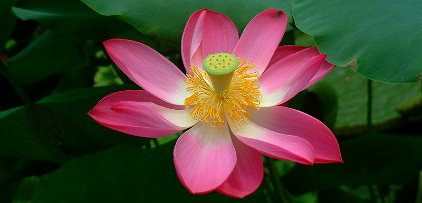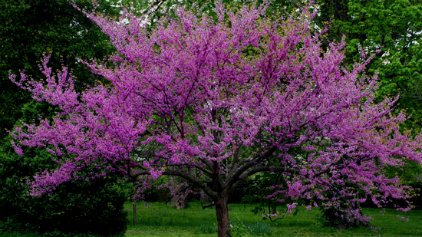by Chris Winslow
Spring will be arriving soon, and it is always such a wonderful
time to be living in central Texas. For me one of the highlights is
the sight of some of our flowering native trees blossoming out –
the redbuds, the mountain laurels and the Mexican plums.
You can see them planted in landscapes as accent plants, and along
the roadways growing wild. It is these wild trees that show us just
how adaptable they are. Sometimes they are exposed to the full
force of the sun and other times they form an understory, shaded
from the sun by larger canopy trees.
At the nursery I am often asked about Eastern, Mexican, and Texas
redbuds. What’s the difference?
The eastern redbud, which grows all over the hills of Austin, is the
largest of the local redbuds. It can reach a height of more than 20
feet and has large, heart shaped leaves.
Its flowers are purplish-red, and they appear late February through
the end of March – a great announcement that spring has arrived.
Its leaves are dull (non-reflective) and tend to rust in the late summ-
er heat. Many horticulturists believe the Eastern redbud is more
suitable to the eastern part of the state where rainfall is more abun-
dant and soil pH is more acidic.
Better for our region are the Texas and the Mexican redbuds.
The Texas redbud grows naturally west of the range of Eastern red-
buds, in calcareous, well-drained (limestone) soils. It is more heat
and drought tolerant, grows to a width and height of 15 feet, and
has rose-purple flowers. Its waxy leaves are smaller than the eastern
variety. It has a multi-trunk form which makes it an attractive land-
scape accent or specimen tree.
The Mexican redbud is a little smaller than the Texas redbud, with
smaller, glossier wavy leaves. Mexican redbuds must be planted
in a well-drained location. They are known for their extreme drought
and heat tolerance. For hard, xeriscape plantings, this beautiful tree
is the one for you.
My two other favorite native, spring flowering trees are the Texas
mountain laurel and the Mexican plum.
The laurel is a large shrub… or small tree if you prefer. It has dark
evergreen leaves and multiple trunks. Its flowers are dark purple
with sweet, grape Kool-Aid fragrance.
They require a well-drained site and can grown successfully in a
wide range of sunlight, from full sun exposure to shade. They are
also drought and heat tolerant.
The Mexican plum can be seen along the roadside toward the end
of February and early March. It is a small tree with black trunks
and beautiful, strong scented white flowers. Mexican plums do best
with a little afternoon shade, making this a good choice for an under-
story tree.
One of the best native stands of Mexican plums is along FM 1626
near Leisurewoods. These redbuds, laurels and plums can be found
all over Hays and Travis counties, both in wild settings and as state-
ments in landscapes. Happy Gardening Everyone! ❦
(Texas, Oklahoma and Mexican redbuds in stock: $36 for 5 gal).






